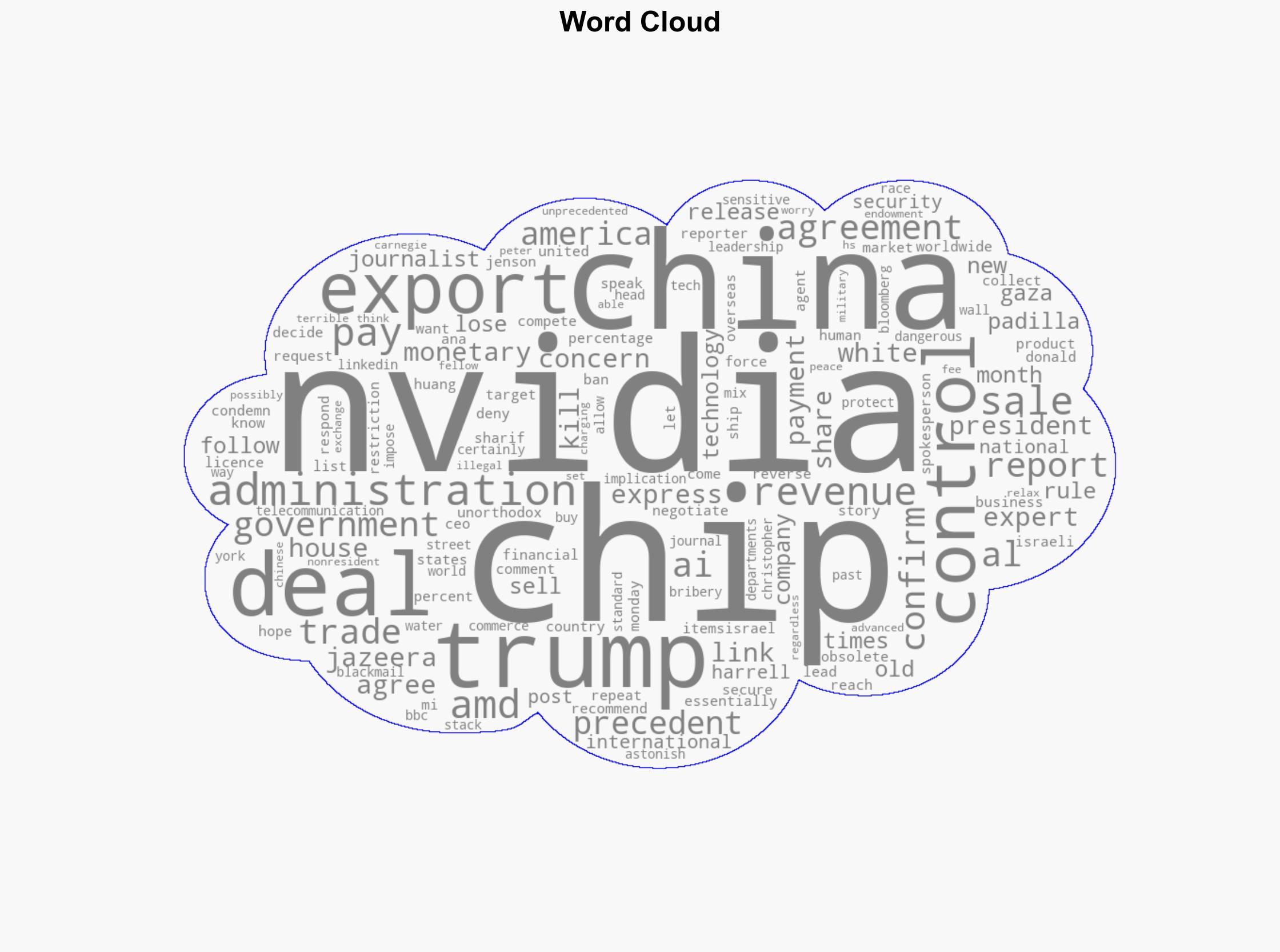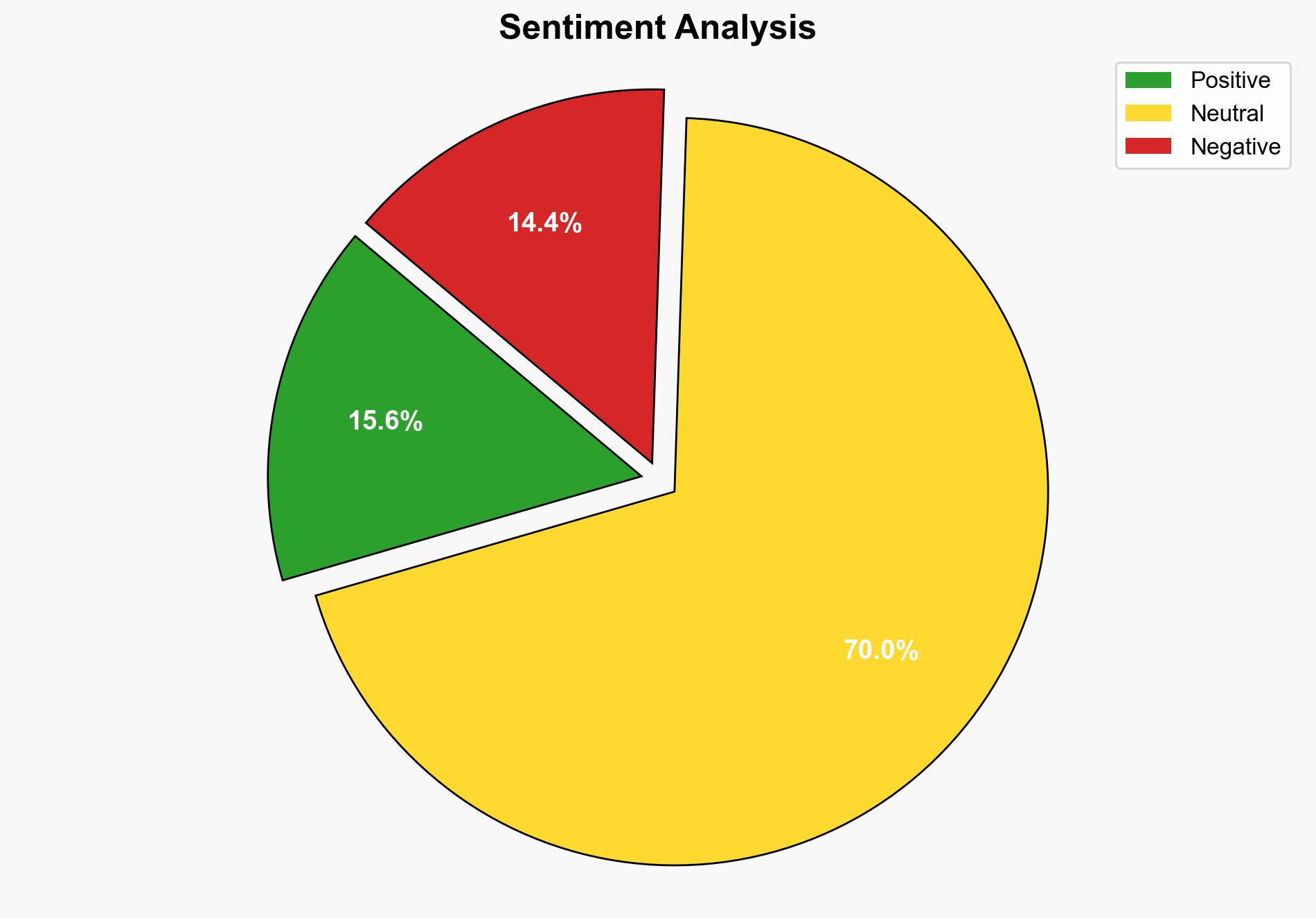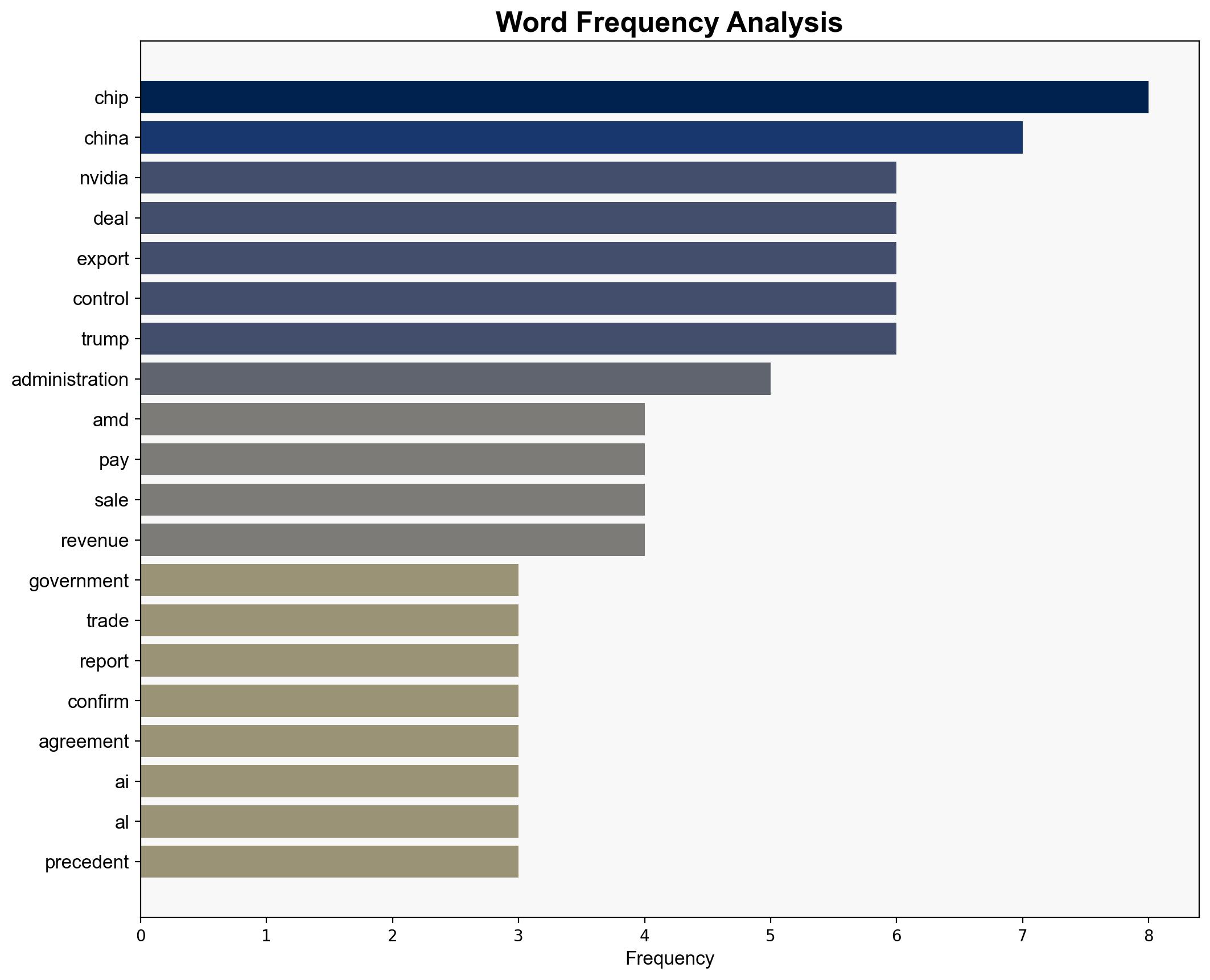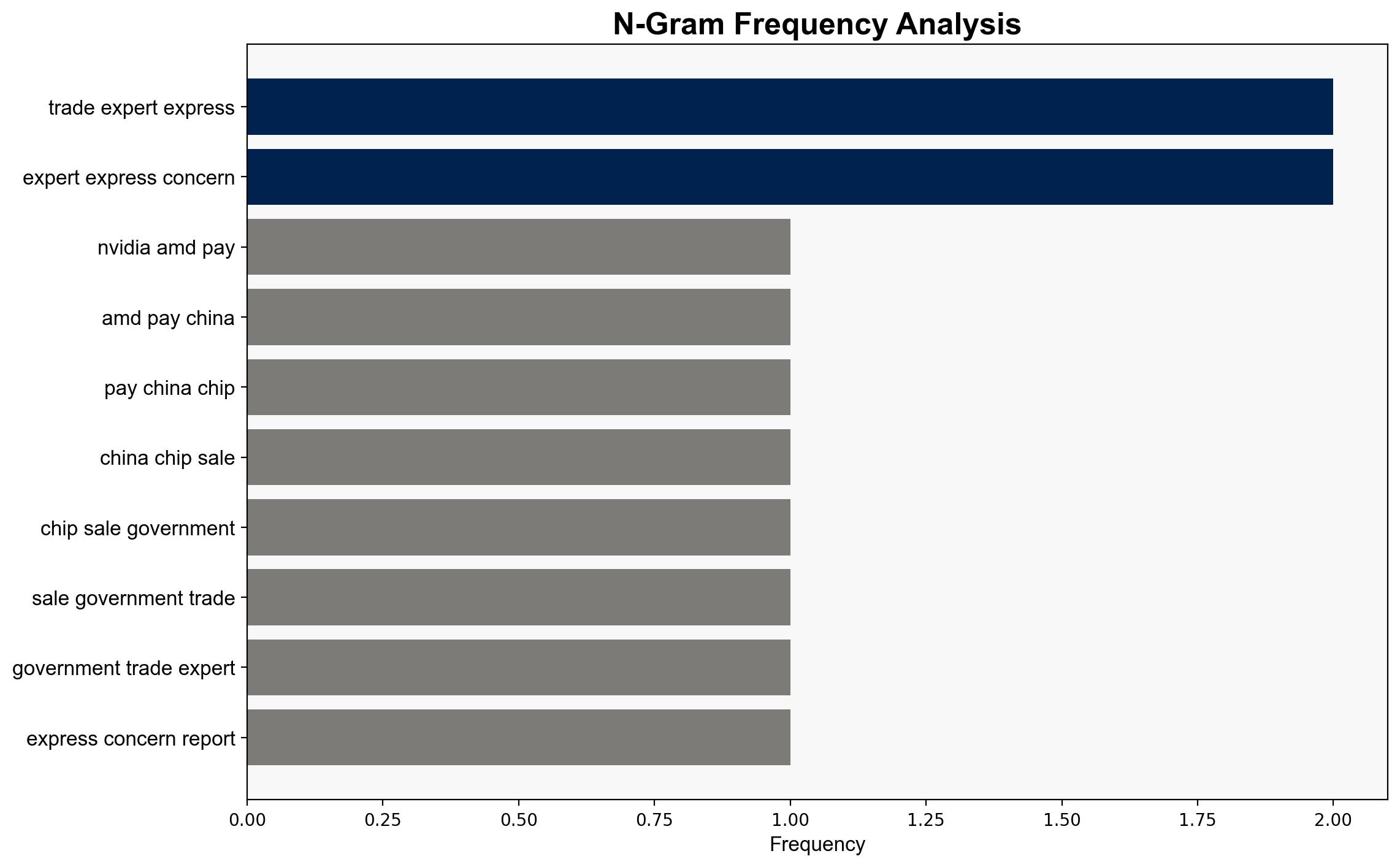Nvidia AMD to pay 15 of China chip sales to US government reports say – Al Jazeera English
Published on: 2025-08-11
Intelligence Report: Nvidia AMD to pay 15% of China chip sales to US government reports say – Al Jazeera English
1. BLUF (Bottom Line Up Front)
The most supported hypothesis is that the reported agreement between Nvidia, AMD, and the US government represents a strategic maneuver by the Trump administration to exert control over sensitive technology exports while generating revenue. Confidence in this hypothesis is moderate due to the unprecedented nature of the agreement and lack of official confirmation. Recommended action includes monitoring for official statements and assessing potential impacts on international trade relations and technology markets.
2. Competing Hypotheses
Hypothesis 1: The agreement is a strategic move by the US government to control technology exports to China while securing financial benefits.
– **Supporting Evidence:** Reports suggest the agreement is linked to export control, with Nvidia and AMD paying a percentage of sales to the US government.
– **Contradictory Evidence:** Lack of official confirmation from involved parties raises questions about the validity of the reports.
Hypothesis 2: The reports are inaccurate or exaggerated, possibly stemming from misinformation or misinterpretation of trade negotiations.
– **Supporting Evidence:** No precedent or official confirmation of such an agreement; potential for misinformation in complex trade discussions.
– **Contradictory Evidence:** Multiple reputable sources have reported on the agreement, suggesting some basis in fact.
3. Key Assumptions and Red Flags
– **Assumptions:** The US government is actively seeking financial compensation as part of export control measures; Nvidia and AMD are willing participants.
– **Red Flags:** Lack of official statements from Nvidia, AMD, or the US government; potential for cognitive bias in interpreting trade negotiations.
– **Deception Indicators:** Unprecedented nature of the agreement suggests potential for misinformation or strategic deception.
4. Implications and Strategic Risks
The reported agreement could set a concerning precedent for international trade, potentially leading to increased tensions between the US and China. It may also impact global technology markets, influencing the competitive landscape. There is a risk of retaliatory measures from China, affecting broader geopolitical dynamics. The agreement could undermine trust in US trade policies if perceived as coercive or exploitative.
5. Recommendations and Outlook
- Monitor for official confirmations or denials from Nvidia, AMD, and the US government to clarify the situation.
- Assess potential impacts on US-China trade relations and technology markets, preparing for possible escalation scenarios.
- Scenario Projections:
- Best Case: Agreement fosters controlled technology exports without significant geopolitical fallout.
- Worst Case: Agreement triggers trade disputes and retaliatory measures, destabilizing technology markets.
- Most Likely: Continued ambiguity and speculation until official statements are released.
6. Key Individuals and Entities
– Donald Trump
– Jensen Huang (Nvidia)
– Christopher Padilla
– Peter Harrell
7. Thematic Tags
national security threats, cybersecurity, international trade, technology export control




